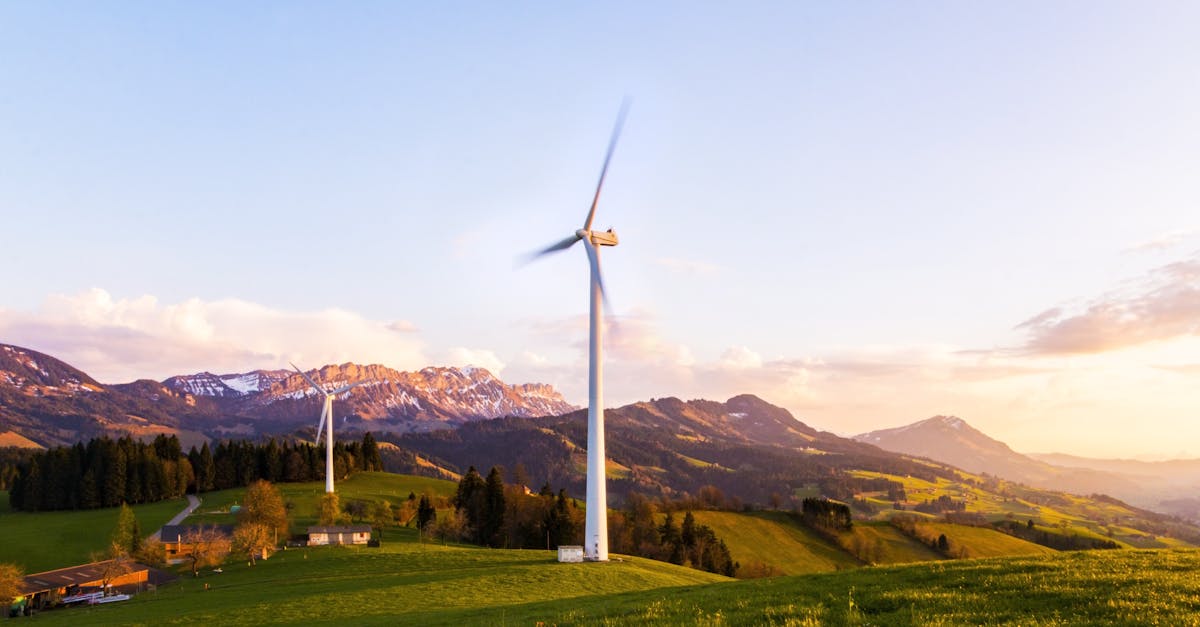10 Key Benefits of Energy Audits for Businesses

Higher Employee Satisfaction
A comfortable workplace significantly boosts employee morale and productivity. Energy audits identify inefficiencies related to heating, cooling, and lighting. By addressing these areas, businesses create environments that enhance focus and overall well-being. Employees are more likely to report higher satisfaction levels when they feel comfortable in their workspace.
Moreover, investing in energy-efficient solutions reflects a company’s commitment to sustainability. This commitment resonates with employees who prioritise corporate social responsibility. When workplaces demonstrate a dedication to a healthier environment, it fosters a sense of pride among staff, thereby enhancing engagement and loyalty. Employees appreciate being part of an organisation that values their comfort and the planet alike.
Creating a Comfortable Work Environment
A well-executed energy audit can lead to significant improvements in workplace conditions, directly impacting employee comfort and productivity. By identifying areas where energy efficiency can be enhanced, businesses can adjust temperatures, lighting, and air quality, creating an environment that supports the wellbeing of staff. A comfortable work setting allows employees to focus better on their tasks, ultimately contributing to heightened morale and job satisfaction.
Additionally, an energy audit can reveal inefficient systems or outdated technology that may be compromising comfort levels. Upgrading to more energy-efficient solutions not only reduces operational costs but also ensures that employees are working in a space that fosters optimal performance. A commitment to energy efficiency reflects a company’s dedication to its workforce, making it an essential aspect of a modern business strategy.
Better Equipment Performance
Energy audits play a crucial role in enhancing the performance of equipment within a business. By identifying inefficiencies and areas for improvement, these audits enable companies to make informed decisions about upgrades and maintenance. This proactive approach helps ensure that machines operate at their optimal levels, reducing the risk of breakdowns and costly repairs. Regular assessment not only improves immediate performance but also contributes to overall operational efficiency.
Furthermore, an effective energy audit can lead to the adoption of advanced technologies and practices. By prioritising equipment that aligns with energy-saving initiatives, businesses can achieve substantial savings in energy costs. Enhanced equipment performance not only reduces operational expenses but can also improve the company’s carbon footprint. This combination of financial and environmental benefits positions businesses favourably in a competitive market.
Maximising the Life of Assets
Regular energy audits provide businesses with critical insights into the condition and performance of their equipment. By identifying inefficiencies and areas in need of maintenance, organisations can take timely action to rectify issues before they lead to costly breakdowns. This proactive approach helps in extending the lifespan of vital assets, ensuring that the equipment operates at optimal levels.
Moreover, implementing the recommendations resulting from an energy audit often leads to enhanced reliability. With a focus on regular maintenance and energy-efficient upgrades, businesses can reduce the frequency of repairs and replacements. This strategy not only preserves the integrity of physical assets but also contributes to long-term cost savings, allowing resources to be reallocated toward growth and innovation.
Strategic Energy Management
Effective energy management is crucial for businesses aiming to optimise their operational efficiency. An energy audit provides insights into energy consumption patterns and highlights areas where improvements can be made. By identifying inefficiencies, businesses can implement targeted strategies that reduce waste and lower energy costs. Such measures not only contribute to financial savings but also align with sustainability goals, enhancing the company's image as a responsible entity in the market.
Proactive planning is essential for addressing future energy needs and anticipating changes in consumption. Energy audits equip organisations with the necessary data to forecast requirements accurately and adjust strategies accordingly. This forward-thinking approach ensures that businesses remain adaptable in a rapidly evolving energy landscape. By committing to strategic energy management, organisations can better position themselves to handle fluctuations in energy prices and legislation while also preparing for potential expansions or changes in operational practices.
Proactive Planning for Future Needs
Conducting an energy audit equips businesses with valuable insights that allow for detailed forecasting of energy needs. Understanding consumption patterns can highlight potential peaks and troughs, enabling companies to strategise and implement solutions tailored to their operations. This foresight not only aids in managing current energy usage but also lays the groundwork for future expansions or changes in operational demands.
By identifying inefficiencies and potential improvements, firms can make informed decisions regarding investment in new technologies or upgrades. This proactive approach ensures that businesses remain agile in an ever-evolving market, capable of adapting to regulations and shifting consumer preferences. Prioritising energy management becomes essential in sustaining growth and competitiveness while aligning with broader environmental goals.
FAQS
What is an energy audit?
An energy audit is a systematic assessment of a business's energy use, identifying areas where energy efficiency can be improved and cost savings can be achieved.
How can energy audits increase employee satisfaction?
Energy audits can help create a comfortable work environment by identifying ways to improve heating, cooling, and lighting, leading to enhanced overall employee well-being and productivity.
What impact do energy audits have on equipment performance?
Energy audits can reveal inefficiencies in equipment use, allowing businesses to optimise performance, reduce downtime, and extend the lifespan of their assets.
Why is strategic energy management important for businesses?
Strategic energy management enables businesses to proactively plan for their energy needs, ensuring they can adapt to future energy demands and regulatory changes while maximising savings.
How often should businesses conduct energy audits?
It is generally recommended that businesses conduct energy audits every three to five years or whenever significant changes occur in operations, equipment, or energy sources to ensure ongoing efficiency.
Related Links
Review of the Top Energy Management SoftwareThe History of Energy Audits in Industrial Settings
Roundup of Best Practices for Conducting Energy Assessments
Why Implementing Energy Management Systems Matters
Why Energy Audits are Crucial for Industrial Efficiency